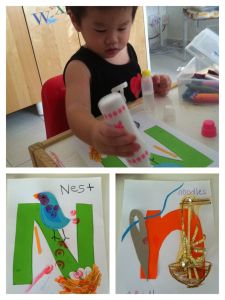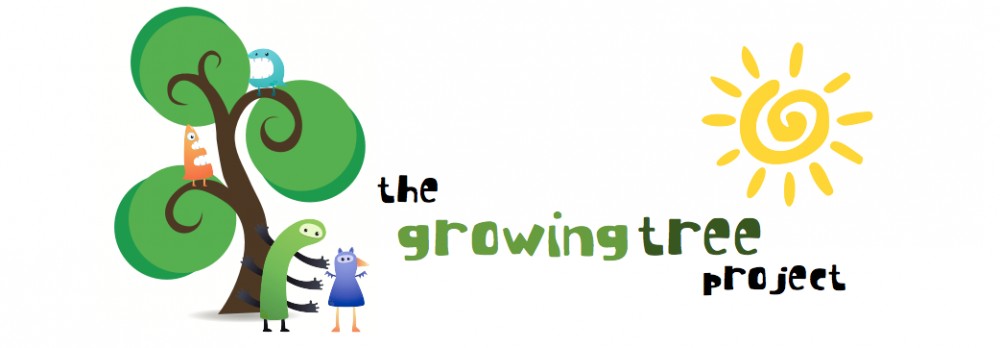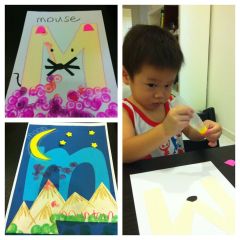
For a while now, I’ve been reading up about the Montessori method. For a while, I even flirted with the notion of getting certified in it; going as far as to get prospectuses from various schools (local and online) before my crazy schedule and my finding out I was pregnant again made me park that plan aside.
One of the things I’ve had to do since embarking on this Montessori exploration is to deal with some severe Montessori side trackers. Now, while I don’t think the montessori method is perfect, I do (still) like it more than the others.
Here, I’ve compiled some refutations for the most common misconceptions of the method.
Montessori is too structured. It doesn’t allow for the child’s freedom and creativity.
The Montessori environment is one in which the child has the freedom to work with materials of his or her own choosing. The materials are to be used in respectful ways, not to be played with carelessly. The children have far less problem with this than adults do.
The Montessori Method isn’t structured enough for my child.
Parents are sometimes told that their LD or otherwise labelled child shouldn’t be in a Montessori program because it is too open and the child needs direct teaching. The Montessori Method does not negate direct teaching when required by the child. The entire method is focused on the child and his or her capacities. A director or directress properly following the method will direct a child as much as is necessary. (This does not mean that every teacher will be prepared to do so, but that it is not the fault of the Montessori Method.) Another aspect which seems advantageous to a child who needs direction is that a Montessori classroom is a multi-age group. There are plenty of little teachers available when the teacher may not be.
Montessori lets kids do whatever they want.
Not at all. The children have freedom (“to do what is right”) within a prepared environment. While there are a wealth of activities available, the child eventually has to choose among what is available. Also, the child is only given as much freedom as he or she can handle. The directress is there to guide the children as needed, be it in directing towards work or in stopping disturbing behaviour. This sort of freedom allows them to follow their needs and interests, as well as being self-reliant and confident, which encourages a healthy self-concept. However, this can also cause problems for the non-Montessori teacher later on who’s used to having children follow herinterests and needs (as well as the student who is used to being really involved in learning and exploration instead of sitting and being forced to “learn”.)
Maria Montessori was against fantasy; she didn’t believe in letting kids be creative.
Maria Montessori was not against fantasy and creativity for young children. What she did observe was that young children were at a stage in life of huge development and to be participating in the here and now was what they needed most. Some fantasy time was not necessarily harmful, just as for adults, some sort of diversion isn’t harmful. But she was concerned about children who spent considerable time fantasizing, especially those who were unable to NOT fantasize. She also found time and time again in her classes that the children would leave toys and fantasy aside, of their own volition, when provided with suitable real-life activities that fulfilled their inner needs. This concurs with Paula Polk Lillard’s experience as described in her book “Montessori in the Classroom: A Teacher’s Account of How Children Really Learn”. Every year, she started her class with one box of toys the children could choose from, plus the prepared Montessori environment. Within a matter of weeks, the toybox became untouched.
As for creativity, children at the 0-6 level (meaning, ages 0-6) do best being creative with real things. They may not be allowed to use the materials in any way they see fit, just as an adult is not allowed to use a car in any way he or she sees fit, but there is opportunity for creativity and more importantly, there is the development of the senses at the 3-6 level that will be the foundations of higher creativity later on. At the 6-12 level, the children are simply at a different stage of development and imagination, creativity and fantasy are non-issues.
Montessori doesn’t allow the children to play; they spend all their time working.
The children at the 3-6 level do not really distinguish between work and play. Their work in the Montessori classroom is their play–they are enjoying themselves and interacting with others.
Montessori discourages children from working together.
At the 3-6 level, children will often want to work alone. As long as they are not disruptive, they are allowed to work together. (This may vary depending on the preschool, but Maria Montessori certainly did not intend for the children to isolate themselves from everybody when working.) At the 6-9 and 9-12 level, they often work together in small groups. There is nothing about the 3-6 level that would discourage working together later on. The children at the 3-6 level simply are not the same!
Montessori pushes academics on children before they are really ready.
Anyone truly adhering to the Montessori method would NEVER push a child towards something. Children at the 3-6 level do begin reading and writing and doing mathematics with concrete materials. They do so not because the teacher forces them, but because there are materials in the environment that interest them and allow them to learn these things. It is worth nothing that Maria Montessori was originally very against teaching young children to read. She believed they simply couldn’t do it and it was detrimental to them to attempt it. It was the children, after some time, who began asking her to teach them to read. She soon discovered that using specifically-made materials, the children were both reading and writing usually by age 5. The children proved her wrong.
Maria Montessori was an occultist and the Montessori method is based on evil teachings.
This is so far from the truth, one could laugh, but it isn’t funny. Anything you might come across along these lines is FALSE and from misinformed people or those whose views in general are extremely distorted. (Please see my rebuttal “Ignorance Isn’t Always Bliss” of an article online for more information.) The Montessori method is an educational philosophy and model adaptable to a wide range of belief systems; it doesn’t mean that the method itself promotes those beliefs. There are some Christian groups who will warn you of the dangers of Montessori or lump it together with New Age teachings, but none of these people, from what I can tell, have ever thoroughly informed themselves about the method and Maria Montessori’s religious views. Regardless, whatever beliefs Maria Montessori may have had that contradict various Christians’ beliefs have no bearing on the usefulness of a prepared environment for learning, on recognising the developmental level of the child, nor on using materials for learning to read or do algebra, for example. Which is really what the method is about.
If you have any concerns whatsoever in this regard, read everything Maria Montessori wrote about the method. You will see that her method, far from being a means of indoctrinating religious beliefs, is really an educational philosophy for EVERY child with practical application included. It is not like Waldorf where teachers must adopt some pretty unique spiritual beliefs. In fact, much of modern educational understanding is based on or confirms her earlier observations of children.
Children in early Montessori schools were taught to sweep and clean as training for becoming servant girls when they got older.
This one is just too funny. There are a lot of misconceptions concerning the Practical Life activities. That the children are being FORCED to do these activities which in a proper Montessori school, would never be done. Children have actually been pulled from Montessori schools after parents observed them participating in activities such as making lunch, scrubbing steps and so on. Children participate in these activities because they want to and often because they love them. Almost any parent knows that the children want to be right there, doing what they are doing. The Montessori Method gives them the chance to do so!








